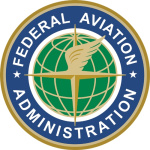- Industry: Government
- Number of terms: 35337
- Number of blossaries: 0
- Company Profile:
A type of voltage regulator used with a generator or alternator that intermittently places a resistance in the field circuit to control the voltage. A set of vibrating contacts puts the resistor in the circuit and takes it out several times a second.
Industry:Aviation
An automatic flight control system that counteracts the rolling and yawing produced by Dutch roll. A yaw damper senses yaw with a rate gyro and moves the rudder an amount proportional to the rate of yaw, but in the opposite direction.
Industry:Aviation
The two movable surfaces on a V-tail empennage. When these two surfaces are moved together with the in-and-out movement of the control yoke, they act as elevators, and when they are moved differentially with the rudder pedals, they act as the rudder.
Industry:Aviation
A constant-displacement fluid pump that contains two meshing large-tooth spur gears. Fluid is drawn into the pump as the teeth separate and is carried around the inside of the housing with teeth and is forced from the pump when the teeth come together.
Industry:Aviation
A part of an aircraft structure used to give the fuselage its shape and, in some types of structure, to provide a small part of fuselage strength. Formers give the fuselage its cross-sectional shape and stringers fill in the shape between the formers.
Industry:Aviation
Air forced down by aerodynamic action below and behind the wing of an airplane or the rotor of a helicopter. Aerodynamic lift is produced when the air is deflected downward. The upward force on the aircraft is the same as the downward force on the air.
Industry:Aviation
The stall of a helicopter rotor disc that occurs near the tip of the retreating blade. A retreating blade stall occurs when the flight airspeed is high and the retreating blade airspeed is low. This results in a high angle of attack, causing the stall.
Industry:Aviation
A factor used in sheet metal work to determine the setback for other than a 90° bend. Setback = K ∙ (bend radius + metal thickness). For bends of less than 90°, the value of K is less than 1; for bends greater than 90°, the value of K is greater than 1.
Industry:Aviation
A surface active agent, or partially soluble contaminant, which is a by-product of fuel processing or of fuel additives. Surfactants adhere to other contaminants and cause them to drop out of the fuel and settle to the bottom of the fuel tank as sludge.
Industry:Aviation
An electrical generator that produces alternating current. The popular DC alternator used on light aircraft produces three-phase AC in its stator windings. This AC is changed into DC by a six-diode, solid-state rectifier before it leaves the alternator.
Industry:Aviation
